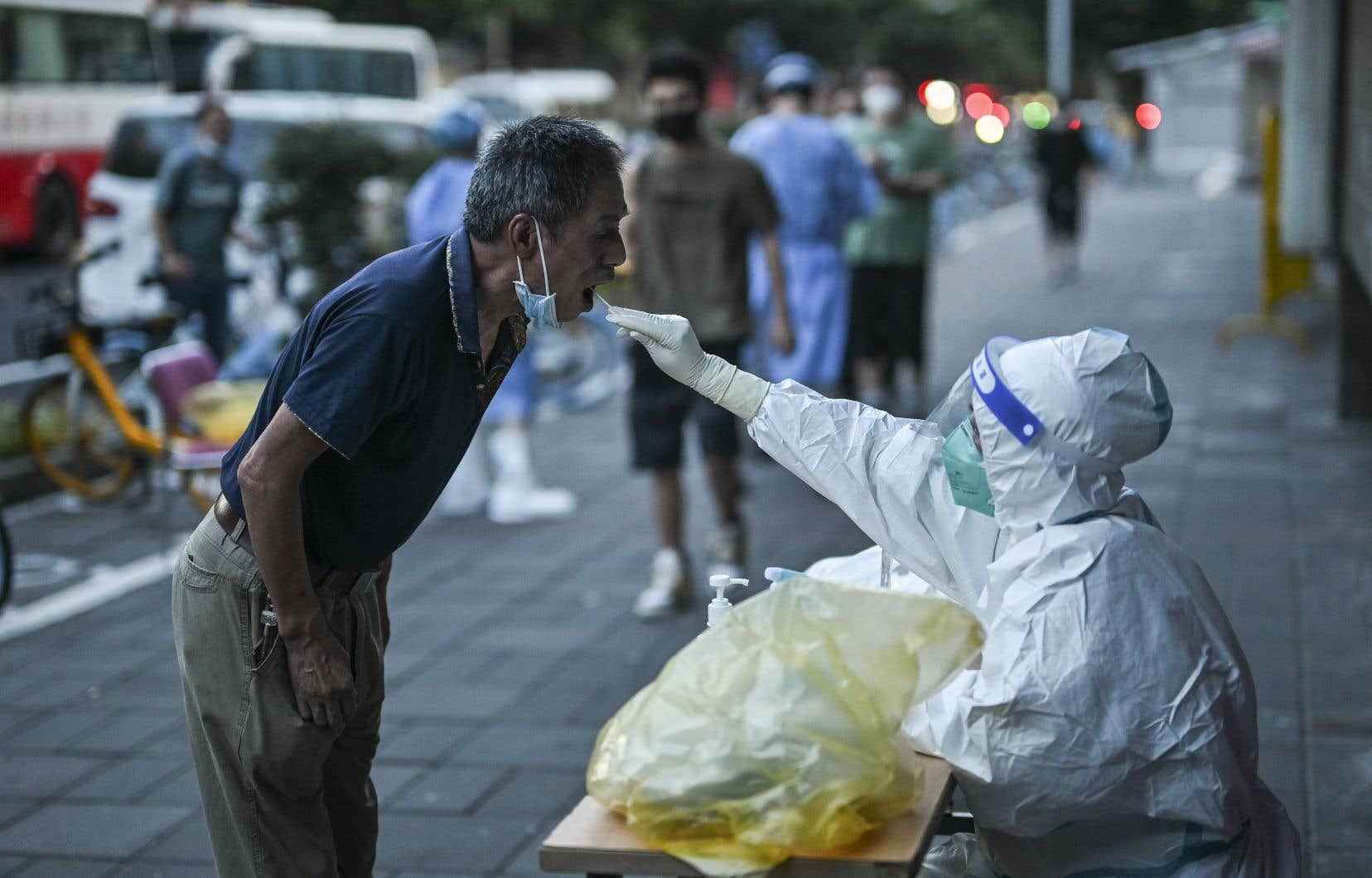Several million people are confined on Wednesday in China, because of an epidemic rebound which raises fears of the return of restrictions, in particular in Shanghai, a month after the lifting of a long and grueling confinement.
China’s largest city was put under a bell for two months in the spring to stem the worst outbreak of COVID-19 in the country since the start of the epidemic.
The particularly strict confinement of the economic capital has been a test for its 25 million inhabitants, faced with problems of supply of fresh produce.
The draconian measures to fight against the virus, including the systematic placement of positive cases in quarantine centers, had provoked the exasperation of the population.
Shanghai lifted most of the restrictions on June 1, but some neighborhoods were temporarily confined after the detection of sporadic cases.
Since Sunday, a rebound has been observed and Shanghai reported 24 additional cases on Wednesday.
To identify contact cases, most districts have launched screening tests.
“I really don’t want to do it, it’s useless,” said resident Alice Chan to AFP, who nevertheless decided to do it for fear of seeing her pass sanitary turn red.
“People are no longer afraid of COVID, they are afraid of being locked up at home,” said Yao, a Shanghainese who declined to give his last name.
Air of deja vu
Shanghai closed all of its karaoke bars on Wednesday, in connection with some cases of COVID-19, authorities said.
Five weeks after the lifting of a difficult confinement, some residents fear a return to tougher restrictions.
A concern amplified by the reception by some households of food rations, according to messages widely shared on social networks.
“Putuo District [dans le centre de Shanghai] send vegetables again”, writes a resident on WeChat messaging.
On Wednesday, the Department of Health reported nearly 300 new cases nationwide.
The main affected area is the eastern province of Anhui, where 1.7 million people in two rural townships are currently confined.
More than a thousand cases have been identified there since last week, with contaminations which are now spreading to the neighboring province of Jiangsu (east), bordering Shanghai and an important manufacturing region.
The Omicron variant remains a “major problem for the Chinese economy”, warns economist Ting Lu of Nomura Bank.
” Under control “
China is one of the latest countries to apply a so-called “zero COVID” strategy in the face of the epidemic. This health policy consists of massive screenings, mandatory quarantines in the event of a positive PCR test and targeted confinements.
Deemed necessary in terms of health by the authorities, these measures penalize activity with many companies closed or operating at idle.
According to estimates by Nomura Bank, at least 114 million Chinese are subject to various travel restrictions, including confinements. They were 66 million a week ago.
The large city of Xi’an (north) is also reimposing “control measures”, after an outbreak of Omicron linked to the BA.5.2 subline, according to local health authorities.
This strain is reputed to be more contagious but less virulent.
Restaurants, bars, places of worship and even karaoke are closed preventively for a week in the metropolis of 13 million inhabitants.
A former imperial capital, Xi’an is known worldwide for its buried terracotta army of China’s first emperor.
The BA.5.2 subvariant was also detected in Beijing, where the authorities, however, on Wednesday deemed the epidemic “under control”.
The capital is nevertheless strengthening its health measures: from July 11, libraries, museums and cinemas will only be accessible to vaccinated people.
